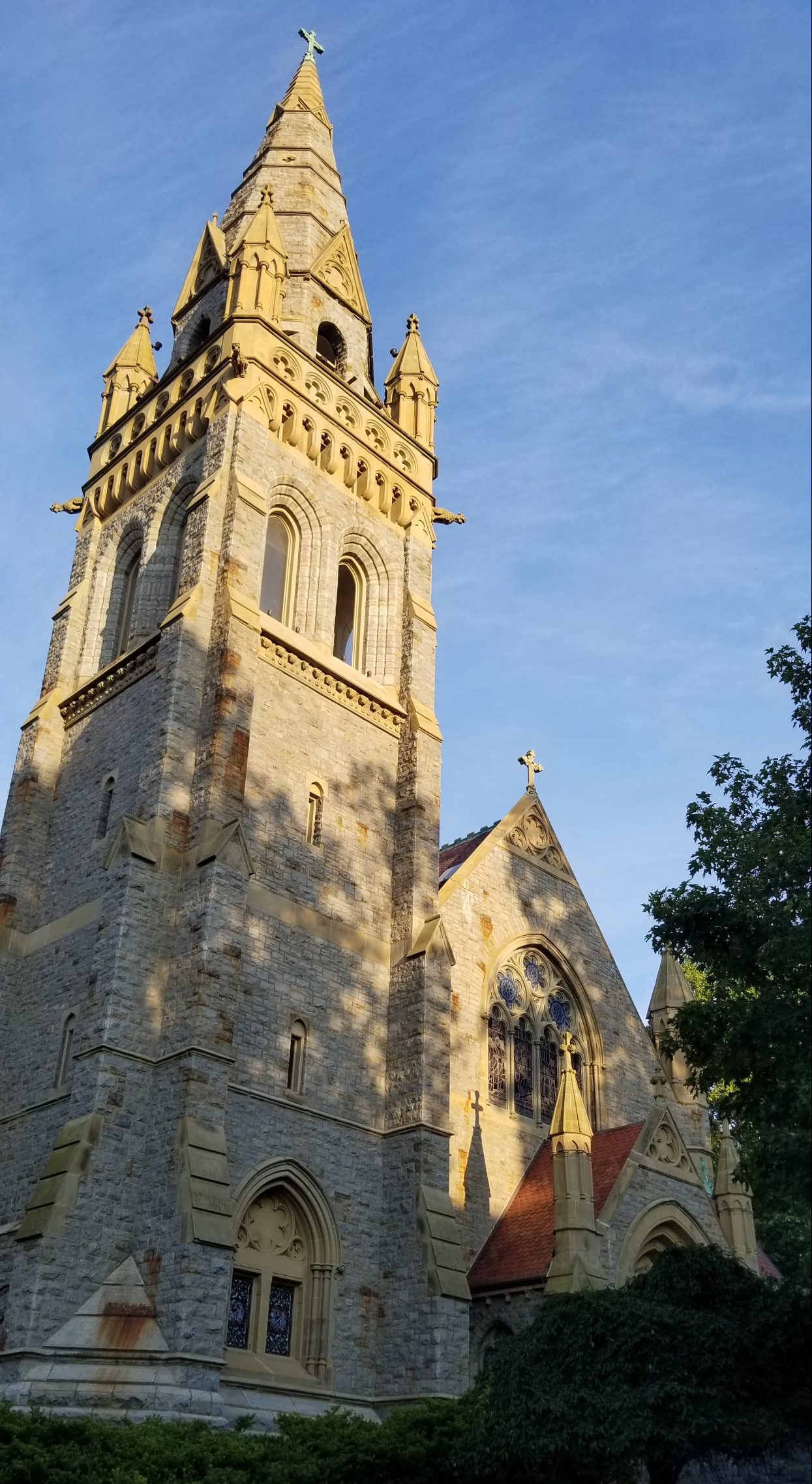
A masterpiece of local Gothic architecture, Bethlehem’s Cathedral Church of the Nativity will be the featured “steeple” on the 1 p.m. Steeples & Steel tour on Saturday, Sept. 16. In partnership with Northampton County and the National Museum of Industrial History, the tours are presented by Steelworkers’ Archives, a nonprofit organization dedicated to preserving the unique legacy of Bethlehem Steel and the city’s historic South Side. Cathedral Church of the Nativity was founded by early industrialists including Robert Sayre, who lived across the street and helped lead the company that would eventually evolve into Bethlehem Steel in the late 19th century.
Bethlehem’s South Side is now known as a youthful hub for the arts, education and technology, but the vibrant cultural scene that exists today rests on top of a layer of rich industrial history.
That history will be explored in four upcoming Steeples & Steel minibus tours presented by Northampton County, the National Museum of Industrial History and the nonprofit Steelworkers’ Archives, which is dedicated to preserving Bethlehem’s steel-making past.
Founded in the late 19th century, Bethlehem Steel eventually became the second largest steel producer in the United States, and a name that was recognized all around the world.
The company attracted thousands of European immigrants to South Bethlehem in the late 1800s and early 1900s, where ethnic groups established churches to serve their respective communities.
A beautiful church that was built at that time will be visited on each of the upcoming tours, which sometimes also stop at local cemeteries. Visits to the site of the former Bethlehem Steel plant and the Hoover-Mason Trestle, an elevated walkway that provides visitors with an up-close view of the blast furnaces that still dominate the South Side’s skyline, are also part of the tours.
Two tours will be held this Saturday, Sept. 16, at 9:30 a.m. and 1 p.m., and will highlight the many sacrifices made by local steelworkers who helped build America; steelworkers like Les Clore, who is a Steelworkers Archives board member and the chair of its speakers bureau.
“People sacrificed a lot when you worked in the plant,” he said. In addition to dangers such as exposure to toxic chemicals and other types of industrial accidents, many Steel employees went years without seeing much of their kids, due the shift work that was required.
Clore recalled that his wife “kind of had to raise the kids” while he worked middle shift in the mold foundry, with Wednesdays and Sundays off rather than a full weekend due to the distribution schedule.
There was a positive side to the job, however.
Clore–a veteran–said the coworkers he had at Bethlehem Steel were like brothers in arms, and beyond the factory walls most workers also had close communities within their churches, where fellow congregants were likely to be steelworkers.
“The churches used to recruit workers for the Steel,” Clore noted. “Working in the steel was just like going to church.”
Tour attendees on Saturday, Sept. 16 will visit one of two landmark South Side churches: either Holy Infancy Roman Catholic Church (9:30 a.m.) or Cathedral Church of the Nativity (1 p.m.).
Tickets are $30 per person, include a hearty lunch and may be purchased on the Steelworkers Archives website.
The lunches are themselves an important part of the tour, as they mimic the fondly-remembered “overtime lunches” Steel employees received if they worked four or more hours of overtime.
“You had your choice of ham, roast beef or tunafish and in the lunch you always got a pastry, a little cube of tiger cheese and an apple and an orange and a can of soda,” recalled Clore, who worked for Bethlehem Steel from the late 1960s until the company declared bankruptcy in 2001.
Each tour will leave from the National Museum of Industrial History, 602 E. Second St., Bethlehem, PA 18015. Free parking is available in the lot located across from the museum.
The next set of tours will be held on Saturday, Nov. 4 at 9:30 a.m. and 1 p.m. The 9:30 a.m. tour will visit St. John AME Zion Church and the afternoon tour’s stop is yet to be determined.
More information along with advance ticket sales will be available on the Steelworkers Archives website.

Packer Memorial Church is a Gothic Revival edifice built in 1885-1887 on the campus of Lehigh University. Designed by noted architect Addison Hutton, the church is listed on the National Register of Historic Places and is well-known as the home of performances by the Bach Choir of Bethlehem. The church was one of two that were visited on the Steeples & Steel tours held earlier this month.







